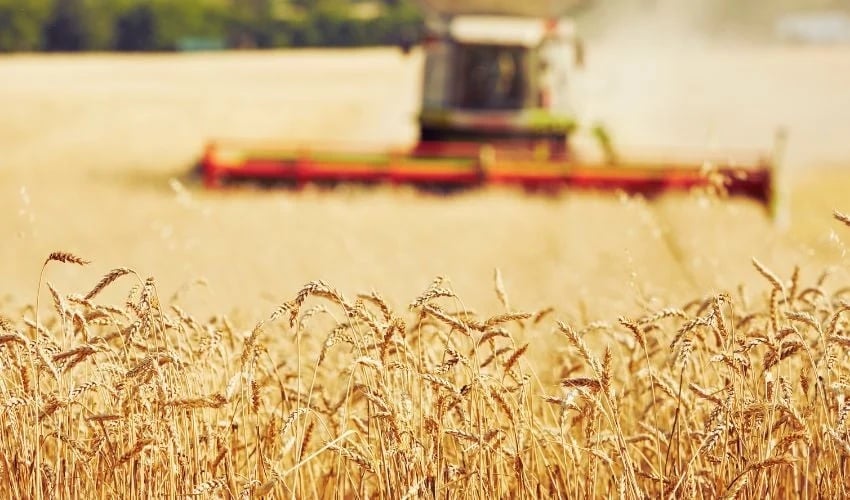
3D Printing and Agriculture: New Frontiers in Farming

Agriculture is consistently evolving. All through historical past, the sector has taken benefit of technological advances which have primarily elevated productiveness and improved meals high quality. Nonetheless, agriculture is going through new challenges, reminiscent of local weather change and robust demand for merchandise. This is the reason the seek for revolutionary options is extra pressing than ever. Latest research and initiatives have proven that additive manufacturing might be the answer. However what precisely is the function of 3D printing in agriculture?
Though 3D printing is just not but a know-how extensively carried out in agricultural practices, some specialised functions have paved the way in which for brand new potentialities. And already we’ve seen the advantages that additive manufacturing has delivered to practices which have a direct affect on farming, reminiscent of beekeeping. Though there are gaps that also have to be stuffed.
If you happen to have been paying consideration in historical past courses you understand that agriculture has been root of all civilization, even earlier than science and writing. Agricultural practices have accompanied mankind for some 12,000 years, and since its look, agriculture has revolutionized historical past by reworking existence. Certainly, with the ability to develop meals is what led to the creation of all settlements, which in flip led to the muse of societies.
And the significance of agriculture has not modified for 1000’s of years, as it’s a strategic exercise for the autonomous growth and wealth of nations. Based on information from the Meals and Agriculture Group of the United Nations (FAO), 1.23 billion individuals work in agrifood methods. This information was obtained as a part of a examine carried out in 2019, which additionally confirmed that nearly half the world’s inhabitants lived in households linked to those agrifood methods.
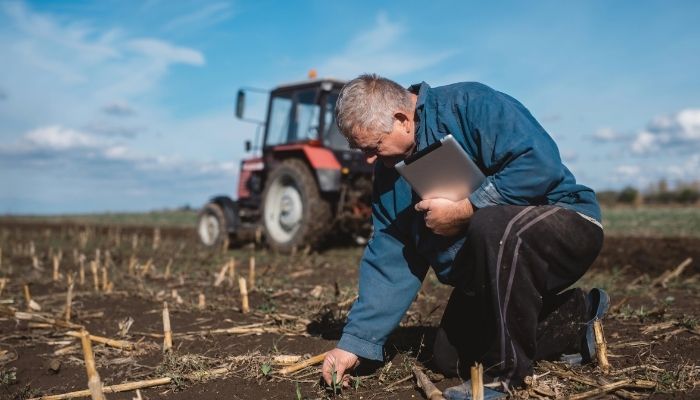
Agriculture is a strategic sector, offering meals for the world’s 8.2 billion inhabitants and uncooked supplies for varied financial sectors.
For a lot of centuries, farming duties have been deeply rooted in guide labor. After the Industrial Revolution, farming modified nearly utterly with the introduction of machines that rationalized guide labor. From the top of the nineteenth century and all through the twentieth century, using machines reminiscent of tractors, combines and ploughs grew to become important.
In recent times, agriculture has taken a brand new step by integrating info know-how into its actions, and the time period Agri-Tech has emerged. The latter refers to using applied sciences reminiscent of autos, drones, satellites, robotics, scanners, computer systems, software program, and so forth. to optimize agricultural manufacturing. So let’s have a look extra particularly at using additive manufacturing within the agricultural sector, and see the way it has revolutionized it.
What are the Functions of 3D Printing in Agriculture?
Once we take into consideration the functions of 3D printing in agriculture, we might consider examples such because the manufacturing of instruments, spare elements or its use in tractor manufacturing. Nonetheless, there are lots of different developments, analysis initiatives and concrete functions which have integrated 3D printing. Whereas it’s true that 3D printing applied sciences haven’t but been totally carried out in agriculture, because it has in drugs or the automotive business, we’ll present on this article that it’s nicely on the way in which. To do that, we’ll begin with crucial functions.
Making Machines Utilizing Additive Processes
Additive manufacturing has taken maintain within the automotive and transportation sectors, and related makes use of have been seen within the manufacture of agricultural equipment. For instance, in 2022, famend producer John Deere produced over 4,000 elements utilizing additive manufacturing in a single 12 months. This was its first step in implementing additive manufacturing at its specialised middle in Mannheim, Germany.
One other instance is Teyme. The Spanish firm makes use of HP’s Multi Jet Fusion know-how to fabricate elements reminiscent of air outlet adapters and air blade positioners, amongst others. These are the included within the agricultural equipment it produces.
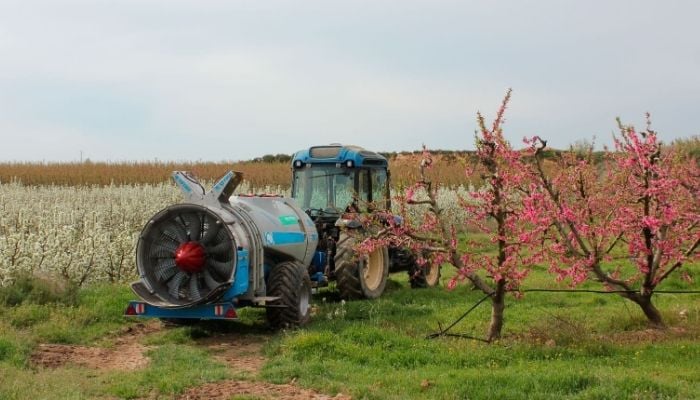
Teyme vaporizer with elements created utilizing Multi Jet Fusion know-how (picture credit: Teyme)
Improvement of Personalized Instruments
3D printing makes it doable to quickly and cost-effectively prototype instruments and elements particular to the wants of agriculture. For instance, machine elements and irrigation gear that may be tailored to every farmer’s specific circumstances. They will even be spare elements for particular machines, reminiscent of instruments which can be now not manufactured, however are nonetheless wanted.
What’s extra, producing these instruments on web site eliminates the necessity for the farmer to journey, and the ready instances that might interrupt farming actions. Lastly, the democratization of additive manufacturing can allow each small and enormous farms to make use of and profit from the know-how.
Manufacturing Sensors and IoT Gadgets
Web of Issues (IoT) sensors and gadgets for monitoring soil circumstances, elements reminiscent of moisture, wind and climate, could be 3D printed. They’re built-in into clever agricultural methods to enhance crop decision-making.
Additive Manufacturing for Drones and Robots
Some drones and agricultural robots have been 3D printed. They marked a milestone within the implementation of automation applied sciences within the subject. In recent times, it has been demonstrated that these gadgets can carry out duties reminiscent of crop monitoring, seeding and the exact utility of fertilizers and pesticides.
For instance, Italian firm Soleon, which focuses on unmanned aerial functions and drones, referred to as on Materialise’s additive manufacturing companies to create the Soleon Dis-co. Tackling the issue of the European corn borer, a pest that may wipe out a big proportion of crops, Soleon and Materialise designed a pesticide supply system. Nonetheless, they used Trichogramma eggs, a species of wasp that feeds on the European corn borer, which supplied a pure answer. On this case, the drone was printed in PA12 utilizing the SLS course of.
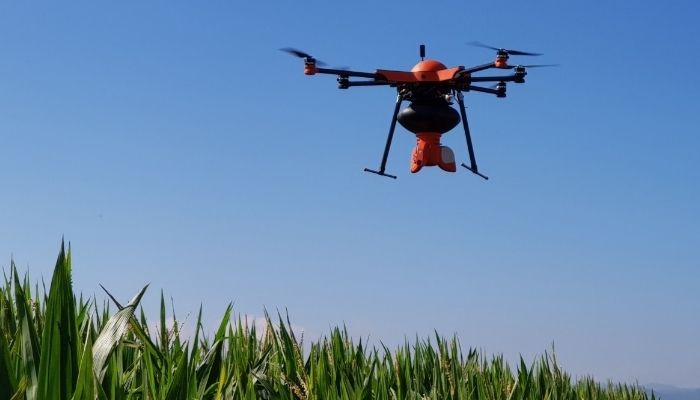
Italian firm Soleon’s 3D-printed drone for pest management (picture credit: Soleon)
Manufacturing of Biodegradable Containers for Seeds and Seedlings
3D printing can be used to create biodegradable containers or pots for seeds or seedlings. Thus making planting simpler and lowering environmental affect.
Manufacturing of Irrigation Parts
Irrigation methods could be improved by designing particular elements for 3D printing. Nozzles and connectors, for instance, optimize water distribution and cut back waste.
Additive Manufacturing of Pest Management Gadgets
Beginning with insect traps, additive manufacturing makes it doable to design and manufacture particular traps for several types of pest. These traps could be optimized to draw and seize bugs. Subsequent, we will discover functions in pheromone-releasing gadgets, that are chemical substances designed to draw or repel bugs. They are often created by 3D printing and designed for managed dispersion.
Horizontal Farming
One other utility for additive manufacturing is the manufacturing of horizontal crops for small areas. Italian firm Hexagro is a specialist on this utility. It makes use of 3D printing processes to create modular, customizable buildings that may be tailored to the precise wants of every area and sort of crop.
This consists of the manufacture of trays, helps and irrigation channels with designs optimized for plant development and environment friendly water and nutrient administration. The power to quickly produce custom-made elements considerably reduces growth prices and lead instances, enabling Hexagro to repeatedly innovate and enhance its rising methods.
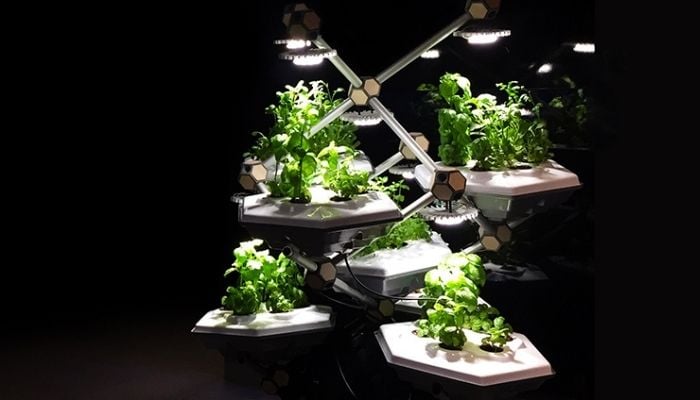
3D-printed horizontal crop with connectors (picture credit: Hexagro)
Scientific Analysis and the Position of Additive Manufacturing
Agricultural analysis has advanced considerably in recent times, pushed by technological advances which can be redefining conventional practices. Amongst these improvements, 3D printing is rising as a revolutionary software that might assist redefine trendy agriculture. The convergence of 3D printing and agriculture guarantees to mark a brand new period in the way in which agricultural sources are grown and managed.
Advances in Supplies for Agriculture
Thermoplastics are extensively utilized in agriculture. Nonetheless, the waste they generate has a direct affect on soil well being and impacts biodiversity. To treatment these issues, options such because the “6R mannequin” (reject, redesign, cut back, reuse, recycle and recuperate) proposed by the United Nations are being employed, and farmers are more and more inspired to make use of pure or biodegradable options. Latest research have discovered options in supplies with completely different properties.
For instance, a publication relationship from 2021 proposes 4D printing as the principle course of for creating supplies helpful for agriculture. The examine is entitled 4D Printing: Prospects for the manufacturing of sustainable plastics for agriculture, and is the results of collaboration between the College of Patras, the Agricultural College of Greece and the Italian Institute of Expertise in Genoa.
4D printing is an evolution of 3D printing that provides the dimension of time. On this case, printed objects are comprised of clever supplies that may change their form or properties in response to exterior stimuli, reminiscent of warmth, gentle, water or motion. Whereas 4D printing is especially utilized in fields reminiscent of drugs, functions in agriculture are minor or non-existent. The group’s analysis reveals that if 4D printing have been utilized to agriculture, it will be doable to extend the biodegradability and environmental, financial and manufacturing advantages of plastics in agriculture. However the principle impediment to wider use is the novelty of the 4D printing course of.
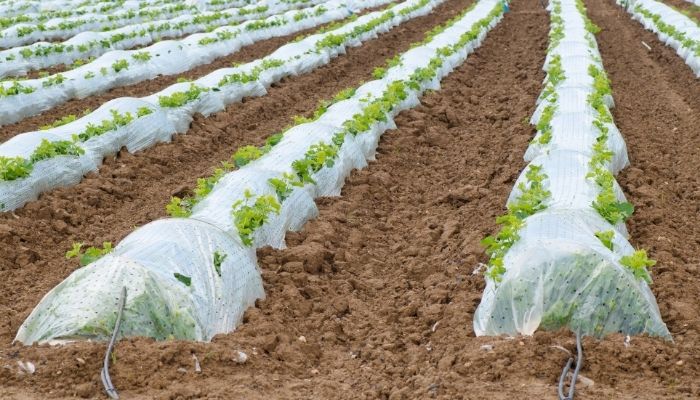
4D printing gives the opportunity of growing the biodegradability of plastics in agriculture
What would 4D printing carry? Some form reminiscence supplies possess traits reminiscent of warmth resistance, magnetoresistance, pH and osmotic strain sensitivity that make them perfect for clever habits. Functions talked about by the analysis group embrace meals packaging, agricultural mulch, shade netting or plastic greenhouse covers. Provided that FDM know-how has made it doable to control PLA and different polymers with self-forming and reminiscence results, it’s doable that this comparatively “easy” approach will allow the creation of efficient, scalable and reasonably priced instruments in apply. Different strategies, reminiscent of these primarily based on stereolithography, have additionally proven their potential in agricultural functions.
3D Printing in Soil Analysis
Soil is without doubt one of the key parts, if not crucial, in agricultural apply. Its examine is prime to understanding the affect of human exercise and the impact of hydraulic, chemical and microbiological traits. In a examine printed in 2020 and carried out by the College of Padua in Italy, soil construction was reproduced with the intention to perceive the way it works.
To do that, they used X-ray microtomography, from which they extracted information and printed the soil construction in resin utilizing 3D Methods’ ProJet 3510 HD printer, a machine that works by materials jetting. Thanks to those 3D printed fashions, the unique construction of the soil samples, together with porosity and pore form, might be reconstructed.
Though the conductivity between the pores was lowered as a result of technical limitations throughout printing, the group was in a position to measure the hydraulic conductivity of a lot of the prototypes, displaying a excessive correlation. This examine has helped to push again the frontiers of soil science research.
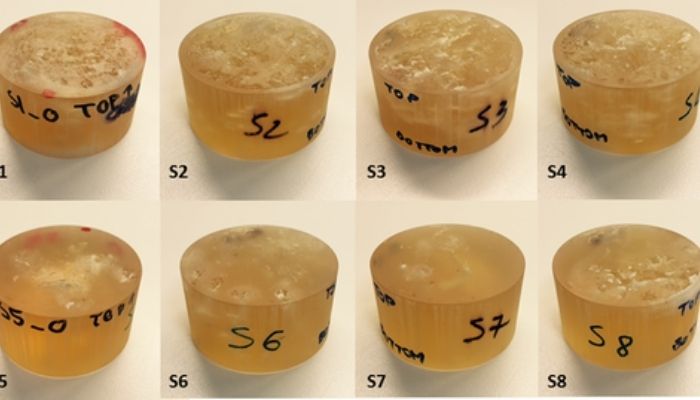
3D printing of various soil assessments (picture credit: European Journal of Soil Science)
One other instance of using additive manufacturing for soil analysis could be present in a 2021 publication by a multidisciplinary group from the College of Virginia within the USA. The examine is entitled: 3D printing of biologically energetic soil buildings, and analyzes the chances of 3D printing soil buildings wherein seeds would germinate.
To this finish, they printed additive-free soil buildings utilizing extrusion strategies. The outcomes confirmed that when the water content material was correctly managed, the printed buildings have been in a position to promote germination and plant development, although they required a number of water. Though the analysis is concentrated on demonstrating the viability of “inexperienced roofs”, the identical precept might be utilized to the planting of herbs reminiscent of coriander, mint, parsley, basil and so forth.
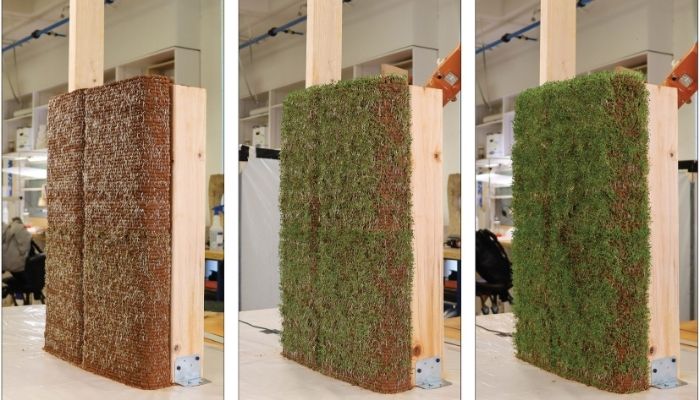
3D-printed “residing partitions” present vegetation development after 144 hours (picture credit: College of Virginia)
Plant Phenotyping
Phenotyping in agriculture is the method of observing and analyzing crops to make predictions about their situation in a given area. Extra particularly, phenotyping is the results of the interplay between a plant’s genetic info and its atmosphere, and offers a greater understanding of its development, growth and response to environmental circumstances. A examine printed in 2024 set a milestone in using additive manufacturing for plant phenotyping. A collaboration between the Institute for Sugar Beet Analysis (IFZ) and the College of Bonn resulted in a 3D-printed plant mannequin for correct and dependable phenotyping.
To offer a reference software through the information assortment and parameter extraction course of, the scientists developed a 3D-printed sugar beet plant mannequin utilizing FDM know-how. This revolutionary examine was carried out by an IFZ doctoral pupil. Jonas Bömer emphasised the significance of this mannequin: “3D printing enabled us to create a cheap reference software to ensure the integrity of the information collected”.
This analysis additionally made intensive use of 3D scanning for information assortment. Certainly, 3D scanning makes it doable to create high-resolution digital fashions of crops, making it simpler to watch their development and growth, and to detect potential issues in good time.Jonas Bömer explains: “By analyzing the soil, farmers can enhance soil administration and implement measures to stop erosion. The interplay of robots with crops is one other drawback that may be solved by deciphering depth info. One instance is fruit harvesting in automated greenhouses, which reduces and simplifies labor-intensive harvesting duties.”
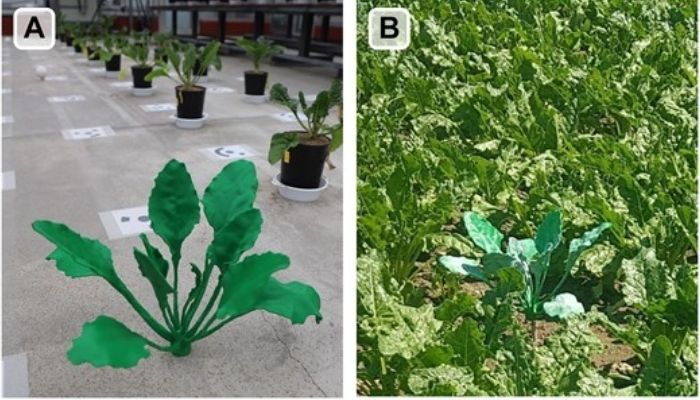
The 3D-printed reference mannequin for sugar beet (picture credit: GigaScience)
3D Printing in Beekeeping
Beekeeping and agriculture are intently linked. Beekeeping performs an important function in agriculture due to its important contribution to the pollination course of, a significant mechanism for the copy of many crops and crops. Based on FAO information, pollinating species immediately affect 35% of worldwide agricultural manufacturing, and 75% not directly. Along with the 200,000 species that contribute to pollination, the 20,000 bee species are the pollinators par excellence.
The interdependence between bees and crops underlines not solely the necessity to protect and assist beekeeping practices, but in addition to guard bees. Threats reminiscent of pesticides, illness and habitat loss are holding again the sustainability and productiveness of agriculture worldwide.
To resolve among the issues affecting bee species, beekeepers have discovered options with the assistance of additive manufacturing. For instance, a grasp’s pupil in Mexico not too long ago developed a resin-printed hive to stimulate honey manufacturing by bees. Additionally price mentioning is the LACRIMA basis within the UK, which 3D prints wood hives to guard colonies. Its LacriNest hives are printed utilizing a fabric extrusion course of and provide bees a pure, undisturbed ecosystem.
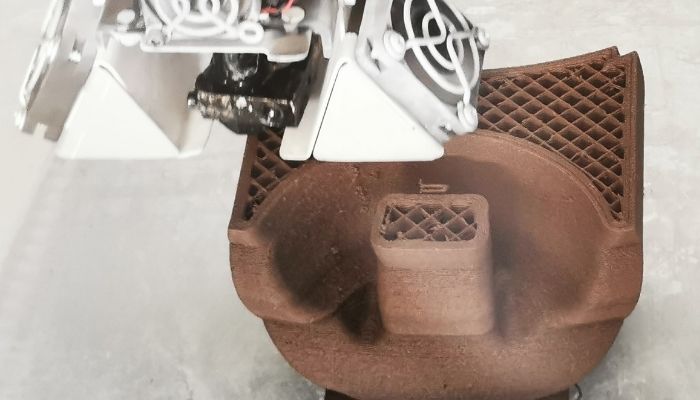
“The improved circumstances supplied by our 3D-printed hives have resulted in more healthy bee colonies.The result’s a big enchancment in agricultural productiveness within the areas the place our hives are used.” Vince Moucha for 3Dnatives (picture credit: LACRIMA)
Vince Moucha, founder and president of the muse, stated in an interview with our group, “Our 3D-printed hives use a particular, totally biodegradable materials, a wood-based composite, which units them other than conventional hives and different 3D-printed options.This materials and the design of our wood hive guarantee not solely environmental sustainability, but in addition glorious insulation and sturdiness, creating an optimum atmosphere for bees, bettering their well being and productiveness.”
As various research carried out worldwide have proven, bees are endangered as a result of intensive use of pesticides, the destruction of their habitat and the results of local weather change, amongst others.The decline of bees not solely impacts the manufacturing of honey and different apiculture merchandise, but in addition compromises the pollination of all kinds of crops. This isn’t a latest drawback; the primary warning indicators appeared within the final century. One of many options discovered is exactly the development of hives to offer them with a nesting habitat.

3D-printed wooden beehive (picture credit: LACRIMA)
LACRIMA’s founder provides, “3D-printed beehives could be built-in into sustainable farming practices by encouraging native manufacturing, lowering transport emissions and utilizing recyclable supplies. They will additionally type a part of built-in pest administration methods, lowering the necessity for chemical therapies.”
What Does the Future Maintain for 3D Printing in Agriculture?
The initiatives talked about, the functions, the advantages recognized and the outcomes already noticed verify that 3D printing has growth potential in agriculture. To some extent, this know-how continues to be in its infancy within the agricultural sector. Nonetheless, the initiatives mentioned right here verify that its potential is huge and promising.
Provided that agriculture is a really previous sector and its practices are rooted not solely in particular strategies but in addition in traditions, we would nicely ask whether or not a know-how as revolutionary as additive manufacturing has a spot in agriculture? As a result of if conventional practices are preserved within the subject, there’s a cause for it, isn’t there? Actually, the agricultural sector by no means misses a chance to innovate. Whereas using 3D printing specifically is just not but widespread, different applied sciences have been exploited.
For the second, probably the most notable advances are in scientific analysis. Specialists should not solely specializing in one topic, however are additionally searching for options to present issues. The examples of analysis talked about listed below are only a few of the various that should exist in nations the place the sector is extra outstanding, reminiscent of China. Because the know-how continues to develop and analysis finds new options by means of additive manufacturing, we anticipate extra widespread adoption and much more disruptive improvements.
What do you consider using 3D printing in agriculture? Tell us in a remark under or on our LinkedIn, Fb, and Twitter pages! Don’t neglect to enroll in our free weekly publication right here for the most recent 3D printing information straight to your inbox! You may also discover all our movies on our YouTube channel.
